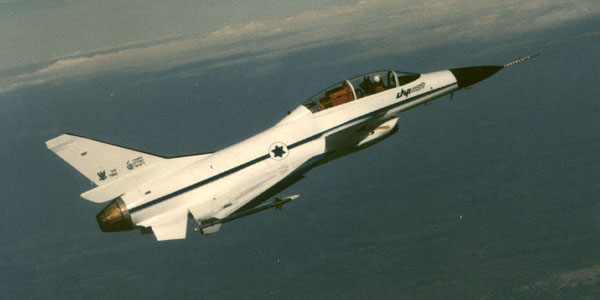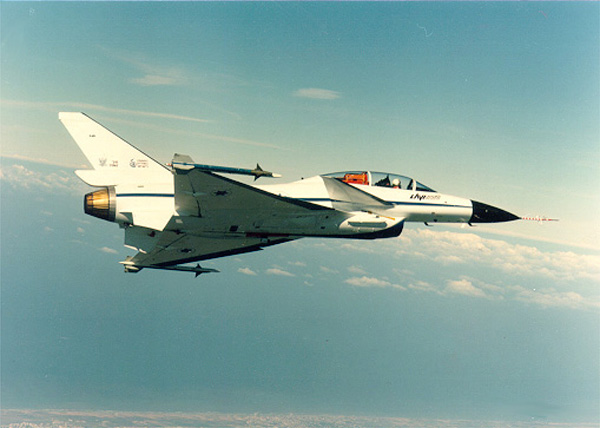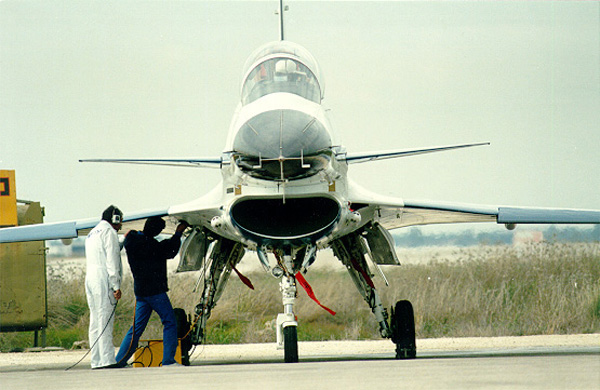Install the app
How to install the app on iOS
Follow along with the video below to see how to install our site as a web app on your home screen.
Nota: This feature may not be available in some browsers.
Je gebruikt een verouderde webbrowser. Het kan mogelijk deze of andere websites niet correct weergeven.
Het is raadzaam om je webbrowser te upgraden of een alternatieve webbrowser te gebruiken.
Het is raadzaam om je webbrowser te upgraden of een alternatieve webbrowser te gebruiken.
FORUMLEDEN met NOSTALGIE......"vreemde" kisten
- Topicstarter steffe
- Startdatum
- Status
- Niet open voor verdere reacties.
Oke !!! Snel gevonden, ik dacht een moeilijke ingebracht te hebben..
Imageshack :
Stel, dat je op een website een wel heel vreemd toestel ziet, een kwantumkikkermark3, geknipt voor dit draadje !!!
Ga met de muisaanwijzer op de afbeelding staan en druk 1x op de
rechtermuisknop. Er verschijnen nu meerdere opties, kies hier voor
"afbeelding opslaan als".
Omdat je nog even geheim wilt houden dat het een kwantumkikkermark3 is, geef je een nieuwe naam in bij "bestandsnaam". Je zou de foto "watisditvooreengekding" kunnen noemen.
Vervolgens kun je aangeven waar de foto opgeslagen moet worden,
bijvoorbeeld in "mijn afbeeldingen"
Je plaats een nieuw bericht in dit draadje .
Onder het kopje "Upload een afbeelding/foto met behulp van ImageShack" kun je kiezen voor bladeren, zoek het bestand met de naam "watisditvooreengekding"
Druk nu op de button met opschrift "host it !"
Even wachten en een scherm verschijnt waarop allerlei links staan aangegeven.
Zoek "Hotlink for forums (1)" en kopieer de tekst die hiervoor staat...
Plaats deze regel in je bericht/post en je zult zien dat na het plaatsen van je bericht/post er keurig een afbeelding staat op de plek van de link.
Helpt dit ?
Imageshack :
Stel, dat je op een website een wel heel vreemd toestel ziet, een kwantumkikkermark3, geknipt voor dit draadje !!!
Ga met de muisaanwijzer op de afbeelding staan en druk 1x op de
rechtermuisknop. Er verschijnen nu meerdere opties, kies hier voor
"afbeelding opslaan als".
Omdat je nog even geheim wilt houden dat het een kwantumkikkermark3 is, geef je een nieuwe naam in bij "bestandsnaam". Je zou de foto "watisditvooreengekding" kunnen noemen.
Vervolgens kun je aangeven waar de foto opgeslagen moet worden,
bijvoorbeeld in "mijn afbeeldingen"
Je plaats een nieuw bericht in dit draadje .
Onder het kopje "Upload een afbeelding/foto met behulp van ImageShack" kun je kiezen voor bladeren, zoek het bestand met de naam "watisditvooreengekding"
Druk nu op de button met opschrift "host it !"
Even wachten en een scherm verschijnt waarop allerlei links staan aangegeven.
Zoek "Hotlink for forums (1)" en kopieer de tekst die hiervoor staat...
Plaats deze regel in je bericht/post en je zult zien dat na het plaatsen van je bericht/post er keurig een afbeelding staat op de plek van de link.
Helpt dit ?
prop-er
Forum veteraan
In 1991, AAI Corporation and Israel Aircraft Industries, Ltd., the original developers of the Pioneer system, formed a jointly owned corporation called Pioneer UAV, Inc. Pioneer UAV, Inc., was created in order to manage the program and function as the prime contractor to the US Government for all Pioneer-related activities. Located in Hunt Valley, Maryland, Pioneer UAV, Inc., maintains resident expertise in quality assurance, program management, configuration management, finance, business development, procurement, logistics support, subcontract, and contract management.
Pioneer Short Range (SR) UAV
After having been impressed by stories of Israeli successes with UAVs in the early 1980s, the Navy initiated an expedited procurement of UAV systems. Pioneer was procured starting in 1985 as an interim UAV capability to provide imagery intelligence (IMINT) for spotters for naval gunfire support from its battleships (originally launched from Navy Iowa-class battleships, today from LPD-class ships), as well as provide a UAV capability for the Marine Corps.
Pioneer was procured starting in 1985 as an interim UAV capability to provide imagery intelligence (IMINT) for tactical commanders on land and at sea. In ten years, Pioneer has flown nearly 14,000 flight hours and supported every major U.S. contingency operation to date. It flew 300+ combat reconnaissance mission during Persian Gulf operations in 1990-91. Since September 1994, it has flown in contingency operations over Bosnia, Haiti and Somalia; most recently it flew in Task Force Eagle and IFOR operations again over Bosnia.
Pioneer skipped the traditional U.S. development phase of the acquisition process, and nine systems, each with eight air vehicles, were procured beginning in 1986 at an estimated cost of $87.7 million. Similar to Aquila, Pioneer is a small, propeller-driven aircraft.
The Pioneer began to encounter unanticipated problems almost immediately. Recovery aboard ship and electromagnetic interference from other ship systems were serious problems that led to a significant number of crashes. The Pioneer system also suffered from numerous other shortcomings. Ultimately, the Navy undertook a $50 million research and development effort to bring the nine Pioneer systems up to a level it described as a "minimum essential capability."
Pioneer is a Department of Defense joint system, having been flown by the U.S. Navy, Marine Corps, and Army. The U.S. Navy and Marine Corps are currently flying Pioneer from LPD class naval vessels and land based operations. First deployed in Dec 1986 aboard the Navy's battleship USS IOWA, the Pioneer is currently assigned to support ship-deployable USN detachments, both East and West coast, two USMC companies, plus testing and training units. Successful deployments have been accomplished by the USN aboard battleships, by the USMC aboard amphibious ships and on land by the USA.
Although Pioneer has never met objective requirements, in the first ten years of service, Pioneer flew nearly 14,000 flight hours and supported every major US contingency operation. The Pioneer system has seen operational use in U.S. contingency operations since the system's original fielding in 1986. Since September 1994, it has flown in contingency operations over Bosnia, Haiti and Somalia; most recently it flew in Task Force Eagle and IFOR operations again over Bosnia. Pioneer flew 1,895 hours in FY-1998, and as of 19 November 1999 Pioneer had accumulated over 20,000 program total flight hours.
It flew 300+ combat reconnaissance missions during Persian Gulf operations in 1990-91. The system received extensive acclaim for outstanding performance in Operation Desert Shield and Desert Storm. The high point of Pioneer's operational history was its unprecedented success during Operation Desert Shield/Desert Storm. Army, Navy, and Marine Corps commanders lauded the Unmanned Aerial Vehicle for its effectiveness as a RSTA, Naval Gunfire Support, BDA, and battlefield management platform. During the Gulf War all the UAV units at various times had individuals or groups attempt to signal the Pioneer, possibly to indicate willingness to surrender. The most famous incident occurred when the USS MISSOURI, using her Pioneer to spot 16 inch rifle fire, devastated the defenses of Faylaka Island off the coast near Kuwait City. Shortly thereafter, while still over the horizon and invisible to the defenders, the USS WISCONSIN sent her RPV over Faylaka Island at low altitude. When the Pioneer came over the island, the defenders heard the obnoxious sound emitted by the two cycle engine, because the air vehicle was intentionally being flown low to let the Iraqis know that they were targeted. Recognizing that with the "vulture" overhead, there would soon be more of those 2000 pound naval gunfire rounds landing on their positions with the same accuracy, the Iraqis made the right choice and, using handkerchiefs, undershirts, and bedsheets, they signaled their desire to surrender.

Pioneer Short Range (SR) UAV
After having been impressed by stories of Israeli successes with UAVs in the early 1980s, the Navy initiated an expedited procurement of UAV systems. Pioneer was procured starting in 1985 as an interim UAV capability to provide imagery intelligence (IMINT) for spotters for naval gunfire support from its battleships (originally launched from Navy Iowa-class battleships, today from LPD-class ships), as well as provide a UAV capability for the Marine Corps.
Pioneer was procured starting in 1985 as an interim UAV capability to provide imagery intelligence (IMINT) for tactical commanders on land and at sea. In ten years, Pioneer has flown nearly 14,000 flight hours and supported every major U.S. contingency operation to date. It flew 300+ combat reconnaissance mission during Persian Gulf operations in 1990-91. Since September 1994, it has flown in contingency operations over Bosnia, Haiti and Somalia; most recently it flew in Task Force Eagle and IFOR operations again over Bosnia.
Pioneer skipped the traditional U.S. development phase of the acquisition process, and nine systems, each with eight air vehicles, were procured beginning in 1986 at an estimated cost of $87.7 million. Similar to Aquila, Pioneer is a small, propeller-driven aircraft.
The Pioneer began to encounter unanticipated problems almost immediately. Recovery aboard ship and electromagnetic interference from other ship systems were serious problems that led to a significant number of crashes. The Pioneer system also suffered from numerous other shortcomings. Ultimately, the Navy undertook a $50 million research and development effort to bring the nine Pioneer systems up to a level it described as a "minimum essential capability."
Pioneer is a Department of Defense joint system, having been flown by the U.S. Navy, Marine Corps, and Army. The U.S. Navy and Marine Corps are currently flying Pioneer from LPD class naval vessels and land based operations. First deployed in Dec 1986 aboard the Navy's battleship USS IOWA, the Pioneer is currently assigned to support ship-deployable USN detachments, both East and West coast, two USMC companies, plus testing and training units. Successful deployments have been accomplished by the USN aboard battleships, by the USMC aboard amphibious ships and on land by the USA.
Although Pioneer has never met objective requirements, in the first ten years of service, Pioneer flew nearly 14,000 flight hours and supported every major US contingency operation. The Pioneer system has seen operational use in U.S. contingency operations since the system's original fielding in 1986. Since September 1994, it has flown in contingency operations over Bosnia, Haiti and Somalia; most recently it flew in Task Force Eagle and IFOR operations again over Bosnia. Pioneer flew 1,895 hours in FY-1998, and as of 19 November 1999 Pioneer had accumulated over 20,000 program total flight hours.
It flew 300+ combat reconnaissance missions during Persian Gulf operations in 1990-91. The system received extensive acclaim for outstanding performance in Operation Desert Shield and Desert Storm. The high point of Pioneer's operational history was its unprecedented success during Operation Desert Shield/Desert Storm. Army, Navy, and Marine Corps commanders lauded the Unmanned Aerial Vehicle for its effectiveness as a RSTA, Naval Gunfire Support, BDA, and battlefield management platform. During the Gulf War all the UAV units at various times had individuals or groups attempt to signal the Pioneer, possibly to indicate willingness to surrender. The most famous incident occurred when the USS MISSOURI, using her Pioneer to spot 16 inch rifle fire, devastated the defenses of Faylaka Island off the coast near Kuwait City. Shortly thereafter, while still over the horizon and invisible to the defenders, the USS WISCONSIN sent her RPV over Faylaka Island at low altitude. When the Pioneer came over the island, the defenders heard the obnoxious sound emitted by the two cycle engine, because the air vehicle was intentionally being flown low to let the Iraqis know that they were targeted. Recognizing that with the "vulture" overhead, there would soon be more of those 2000 pound naval gunfire rounds landing on their positions with the same accuracy, the Iraqis made the right choice and, using handkerchiefs, undershirts, and bedsheets, they signaled their desire to surrender.

Danny Mulders
verslagschrijvers
zo te zien iets russisch? :?
Even terug naar mijn laatste foto: op de (fraaie) website van de Israelische Luchtmacht
http://www.iaf.org.il/Templates/homepage/homepage.aspx?lobbyId=25&lang=EN
heet dit toestel Scout of Searcher (resp. jaren 70 en 2000), uiterlijk zijn die precies hetzelfde. Maar in de USa heet het ding kenelijk Pioneer... duidelijk hetzelfde vliegtuig.
Okee, verder met de volgende... Frodo?
http://www.iaf.org.il/Templates/homepage/homepage.aspx?lobbyId=25&lang=EN
heet dit toestel Scout of Searcher (resp. jaren 70 en 2000), uiterlijk zijn die precies hetzelfde. Maar in de USa heet het ding kenelijk Pioneer... duidelijk hetzelfde vliegtuig.
Okee, verder met de volgende... Frodo?
Payen PA-49 'Katy'. Tot de komst van de Cri-cri met 2x JPX het kleinste straalvliegtuig ter wereld.
Die man heette Chroestjev en het was bij de Alg. vergadering van de VN......steffe zei:en Bresznjef in koleire maar met zijne schoen slaan op zijn tafeltje bij de veiligheidsraad.....
Ja Steffe, maar om dat te weten moet je een zekere leeftijd hebben...Bruno van Hoek zei:Die man heette Chroestjev en het was bij de Alg. vergadering van de VN......steffe zei:en Bresznjef in koleire maar met zijne schoen slaan op zijn tafeltje bij de veiligheidsraad.....
Ik weet nog dat ik op school bij maatschappijleer Chroetsjef heb geimiteerd. Met die schoen ja...
Bart
- Status
- Niet open voor verdere reacties.







